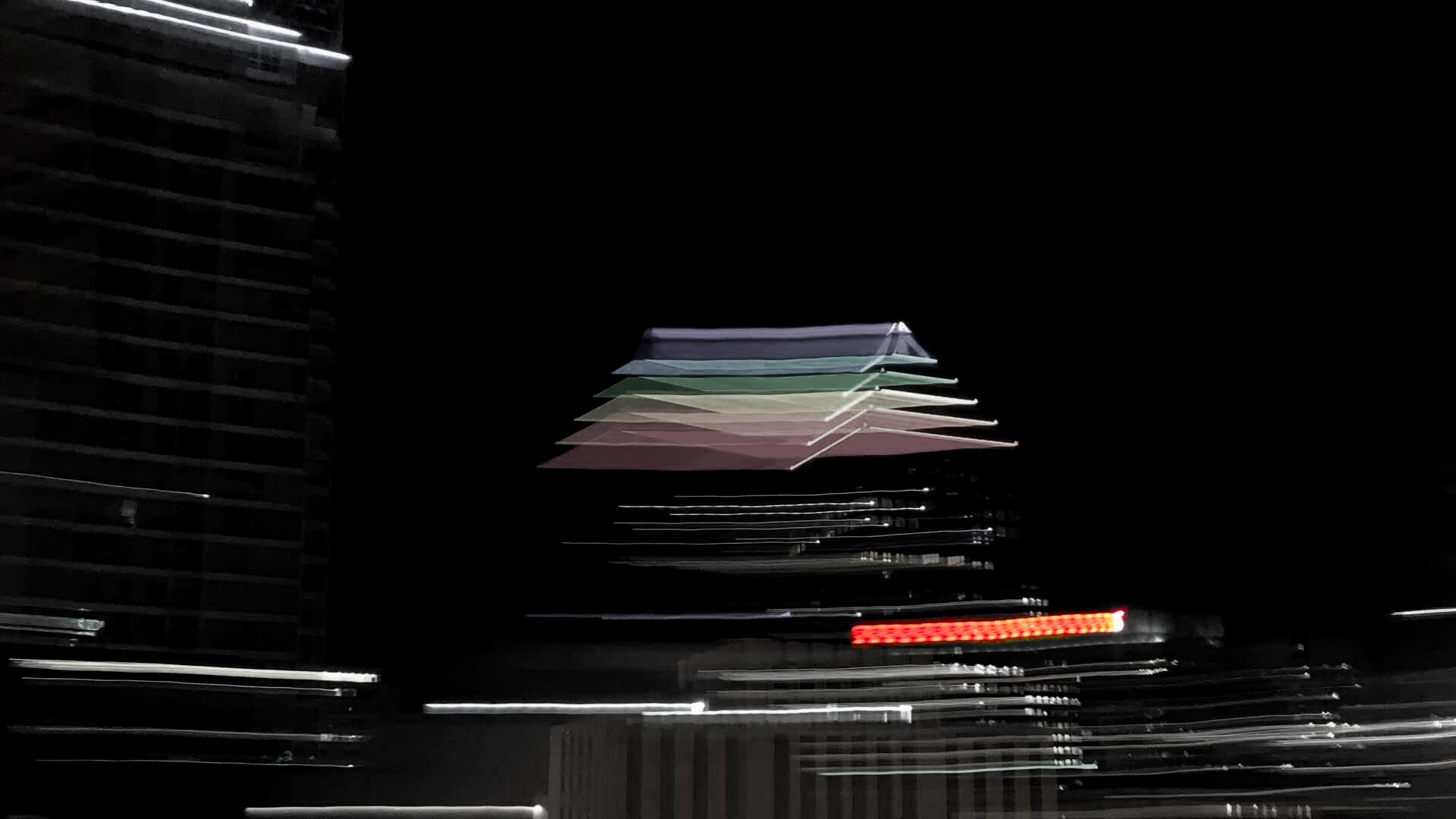
Heading H2
Cinematic and photographic, spatial and visceral, the creations resonate with the quality of the punctum, as ascribed to the photographic image by Barthes. The lyrical intonation and retrospective candour entwine, juxtaposing an aesthetic imagery with a situational ethos void of poeticism. The presence of the imagery pays homage to the concept espoused by Joseph Beuys, that “To make people free is the aim of art, therefore art for me is the science of freedom.”

The question exists as to how best to manoeuvre within the limited confines of a space in a geo-political zone far from the original site of capture. And how best to free the perspective of those in attendance when one undertakes a mnemonic venture to illustrate a reality as brutal, intense and unsparing as this.
In this respect, the artist has employed a technique that highlights the absence of pedestrians, of citizens ensnared in the self-perpetuating demise of hope. The barren concrete, ashen-gray structures, and architectural scenery demand that our ocular focus (including our conscious or subconscious response) be embedded in the diaspora reflected in the still frames.
Heading H3
The circuitous tedium and positioning of the moving images in the gallery’s hall conflict spatially and thematically with the grain and texture displayed within the static imagery. There is nothing accidental or puzzling about it: the polemic has become one of medium, while the content of the message bespeaks an eternal and enduring suffering. Absence is not confined here to compositional elements; it manifests as a thematic continuance.
The question exists as to how best to manoeuvre within the limited confines of a space in a geo-political zone far from the original site of capture. And how best to free the perspective of those in attendance when one undertakes a mnemonic venture to illustrate a reality as brutal, intense and unsparing as this.

H6 Label or heading 6 (all caps)
In this respect, the artist has employed a technique that highlights the absence of pedestrians, of citizens ensnared in the self-perpetuating demise of hope. The barren concrete, ashen-gray structures, and architectural scenery demand that our ocular focus (including our conscious or subconscious response) be embedded in the diaspora reflected in the still frames. The circuitous tedium and positioning of the moving images in the gallery’s hall conflict spatially and thematically with the grain and texture displayed within the static imagery.
H5 Heading
There is nothing accidental or puzzling about it: the polemic has become one of medium, while the content of the message bespeaks an eternal and enduring suffering. Absence is not confined here to compositional elements; it manifests as a thematic continuance.

The question exists as to how best to manoeuvre within the limited confines of a space in a geo-political zone far from the original site of capture. And how best to free the perspective of those in attendance when one undertakes a mnemonic venture to illustrate a reality as brutal, intense and unsparing as this.


In this respect, the artist has employed a technique that highlights the absence of pedestrians, of citizens ensnared in the self-perpetuating demise of hope. The barren concrete, ashen-gray structures, and architectural scenery demand that our ocular focus (including our conscious or subconscious response) be embedded in the diaspora reflected in the still frames.

There is nothing accidental or puzzling about it: the polemic has become one of medium, while the content of the message bespeaks an eternal and enduring suffering.
Citation
H4 This article
The circuitous tedium and positioning of the moving images in the gallery’s hall conflict spatially and thematically with the grain and texture displayed within the static imagery. There is nothing accidental or puzzling about it: the polemic has become one of me

